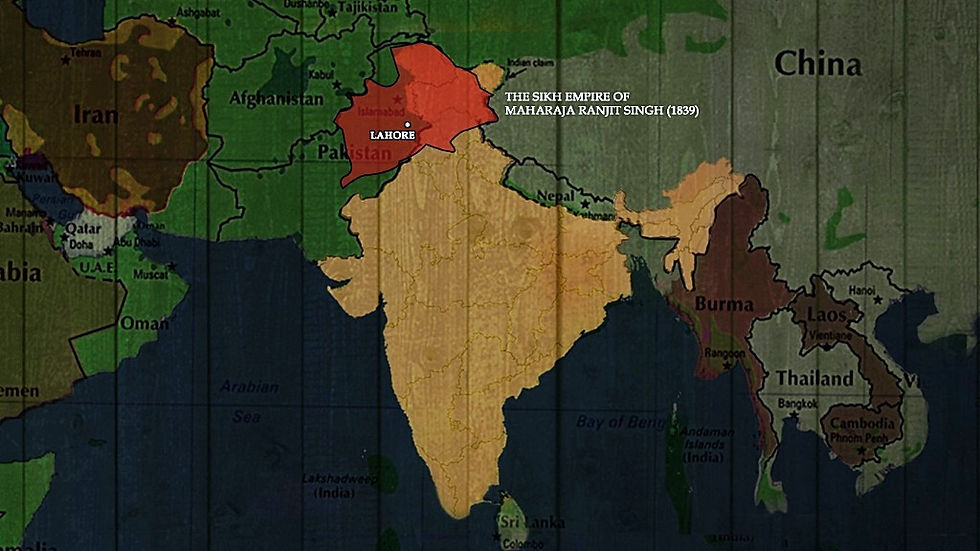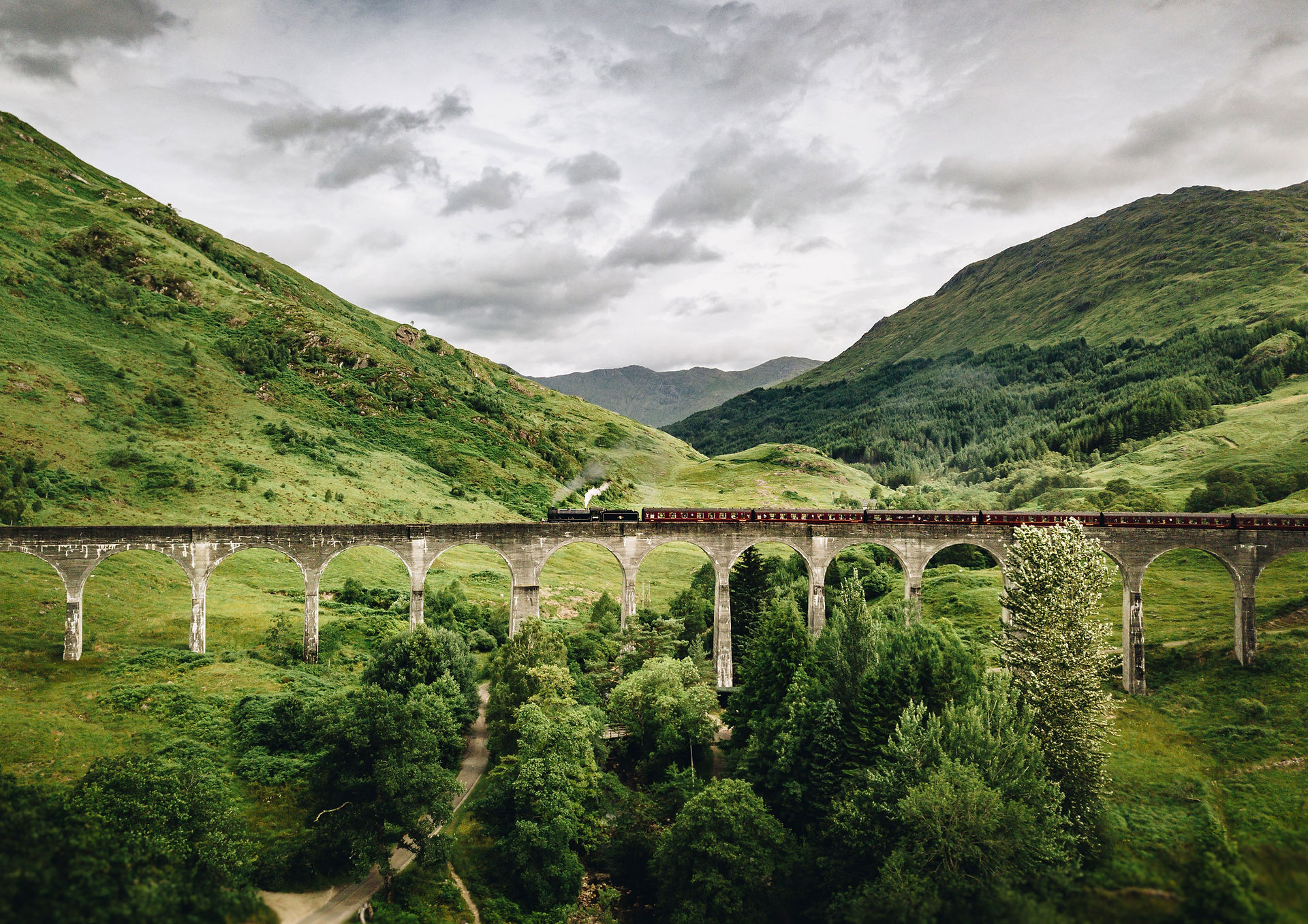Ten Intriguing Facts of Punjab and Punjabis!
- ritafarhatkurian
- Nov 23, 2021
- 7 min read
The beautiful, fruitful land of Punjab amid flowing rivers has enthralled millions over ages. Punjab means ‘The Land of Five Waters’, referring to the rivers Jhelum, Chenab, Ravi, Sutlej, and Beas and is located in the northwest region of India, known for its captivating culture and rich tradition. It is the epicenter of the ancient settlement in the Indian Subcontinent. Punjab is the place where the first civilization of South Asia flourished around 2500 BC. Due to its topographical significant location, Punjab has been ravaged and ruled by many invaders from South Asia. After the fall of the Mughal Empire, the Sikh influence emerged and ruled the area.
Punjabi is popular for its exquisite world-famous cuisines, rich agriculture, bright joyous festivals, sacred gurudwaras, lively Punjabi folk dances, songs, and much more. Read on more about this charming place and learn some interesting facts about the Land of the Five Rivers.
History: The Punjab region of India and Pakistan has a historical and cultural link to Indo-Aryan peoples as well as partially to various indigenous communities. As a result of several invasions from Central Asia and the Middle East, many ethnic groups and religions make up the cultural heritage of Punjab. In 1947, the Punjab Province of British India was partitioned along strict lines into West Punjab and East Punjab, with 200,000 to 2 million Punjabis hit heavily by this action triggering widespread violence and bloodshed. The West part formed Pakistan, an Islamic Republic while the East became India’s Punjab, a mainstream state. The Punjab region was added by the British East India Company from the Sikh Empire in 1849.
Ten Intriguing Facts about Punjab
1: Punjab is known as the Cradle of the Indus Valley Civilization:

The Punjab region was the cradle for the Indus Valley Civilization and had numerous migrations by the Indo-Aryan peoples. The land was later invaded and contested by the Persians, Mauryans, Indo-Greeks, Indo-Scythians, Kushans, Macedonians, Ghaznavids, Turkic, Mongols, Timurids, Mughals, Marathas, Arabs, Pashtuns, British, and other peoples. Historic foreign invasions mainly targeted the most productive central region of Punjab known as the Majha region, the heart of Punjabi culture and traditions. Famously, the Punjab region is often referred to as the breadbasket in both India and Pakistan.
2: It is the Birth Place of the Sikh Religion:

Sikhism religion originated in the Punjab region of the Indian subcontinent around the end of the 15th century. Sikhism is one of the youngest of the major religions and the world’s fifth-largest organized religion, with about 25–30 million Sikhs as of the early 21st century.
Sikhism developed from the spiritual teachings of Guru Nanak, the first Guru (1469–1539), and of the nine Sikh gurus who succeeded him. In the late 15th century, Guru Nanak Dev laid the foundation of Sikhism in Punjab. Punjab is the largest state of the Sikh population. Sikhism is monotheistic and advocates the belief in One God and is signified by the term. Guru Nanak summarized this perspective as: “Truth is the highest virtue, but higher still is truthful living.
3: Sikh Empire Founded in Punjab:

The Sikh Rule started in 1707, the year of Aurangzeb’s death and the start of the downfall of the Mughal Empire In 1799, under the leadership of Maharaja Ranjit Singh, the Sikh Empire was formed. It was a secular empire based in Punjab. It lasted until 1849. It was powerful, religiously diverse, with an estimated population of 3.5 million in 1831 (making it the 19th most populous country at the time), and it was the last major region of the Indian subcontinent to be annexed by the British Empire.
4: Place of the Holiest Gurdwara of Sikhism and Capital of the Sikh Pilgrimage:

Sri Harmandir Sahib, also known as Sri Darbar Sahib, informally referred to as the Golden Temple, is the holiest Gurdwara of Sikhism, located in the city of Amritsar, Punjab, India. The Temple was renovated in marble and copper in 1809, and in 1830 Ranjit Singh donated gold to overlay the sanctum with gold foil. After learning of the Gurdwara through Maharaja Ranjit Singh, the 7th Nizam of Hyderabad “Mir Osman Ali Khan” started giving yearly grants towards it.
Golden Temple, one of the most sacred holy sites for Sikhs around the world, is being renovated with 160 kg gold worth INR 50 crore. The gold plating is being done on the four domes at the entrance of the temple. The renovation amount has been collected through kar sewa or voluntary contribution made by the devotees.
Over 100,000 people visit the holy shrine daily for worship and also partake jointly in the free community kitchen and meal (Langar) regardless of any cast or religion they sit together on the ground and have the meal. There is a big Sarovar ( pond ) numerous devotees take a holy dip.
Amritsar was founded in 1577 by Ram Das, the fourth Guru of the Sikhs, on a site granted by the Mughal emperor Akbar. Amritsar not only is home to hundreds of thousands of Sikhs but also is the chief pilgrimage destination for Sikhs living elsewhere in India and abroad.
5: Most Fertile State in India Became the Granary and Bread Basket of India

Punjab is the most fruitful land of India as a result of the five rivers of Indus flowing through this area enriching the land with the highest production of wheat. Besides wheat, rice, sugar sticks, and other crops are also abundantly produced. Being the biggest patron of primary oats to the nation, Punjab has acquired the title of ‘Storage facility of India’ or ‘India’s Bread Basket’. Punjab delivers generally 12% of the all-out oats created in India.
6: Site of the Martyrs of Jallianwala Bagh Massacre

Jallianwala Bagh is situated in Amritsar, the largest city of Punjab. The Jallianwala Bagh massacre, also known as the Amritsar massacre, took place on 13 April 1919. The incident large but peaceful crowd had gathered at the Jallianwala Bagh in Amritsar, Punjab to protest against the arrest of pro-Indian independence leaders Dr. Saifuddin Kitchlew and Dr. Satya Pal. In response to the public gathering, the British Brigadier-General R. E. H. Dyer surrounded the Bagh with his soldiers. The Jallianwala Bagh could only be exited on one side, as its other three sides were enclosed by buildings. After blocking the exit with his troops, he ordered them to shoot at the crowd, continuing to fire even as the protestors tried to flee. The troops kept on firing until their ammunition was exhausted. Estimates of those killed vary between 379 and 1500+ people and over 1,200 other people were injured of whom 192 were seriously injured. This massacre is pivotal in Indian history as the spot which spurred on a great freedom movement from the yolk of the British, a dream fulfilled in 1947.
7: Some World-Famous Cuisines Originated in Punjab

Delicious scrumptious dishes like Sarson Ka Saag,, Shami Kebab, Makki Ki Roti, Butter Chicken, Palak Paneer, Aloo Paratha, Tandoori Chicken and many other mouthwatering dishes have tempted taste buds over generations and become wildly popular even in the West. The culinary practices of the state are simple, rustic as delectable in a Punjabi Dhaba as in a 5-star hotel, exotic and succulent everywhere.
Punjabi cuisine is recognized for its rich, buttery flavors along with the tremendous vegetarian and meat dishes. One of its main features is its diverse range of dishes. Restaurant-style dishes use large amounts of ghee and butter. Some food items are eaten daily while some delicacies are cooked only on special occasions. As the saying goes, the way to a person’s heart is through the stomach! Certainly, Punjabi food has stolen people’s hearts.
8: Punjab is Famous For Its Rich Traditional Folk Dance And Song Across The Globe.

Punjab is known for its rich traditional folk dance and music across the world and always blend together inseparably. There are a plethora of folk dances that have been found across Punjab including the most famous Bhangra, The exuberance and enthusiasm of the Punjabi people is strongly displayed in their folk dance. Bhangra is one of the oldest and most traditional Punjabi dance forms originated in the Majha area of Punjab. All the dances are immensely picturesque, colorful, and evoke strong emotions.
9: Uniquely, Punjab is the Only State that Shares Its Capital

Uniquely, the capital of Punjab and Haryana. two states is Chandigarh which is a Union territory. There is also one common High Court for both states which is known as Punjab and Haryana High Court, situated in the capital city of Chandigarh. Chandigarh was designed by the Swiss-French modernist architect, Le Corbusier. His buildings include the Capitol Complex with its High Court, Secretariat, and Legislative Assembly, as well as the giant Open Hand Monument. The nearby Rock Garden is a park featuring sculptures made of stones, recycled ceramics, and industrial relics.
10: Demanded a Separate Country in the 1970s and 1980s

In the 1970s and 1980s, the Khalistan movement or the Sikh Separatist movement reached its prominence. However, Operation Blue Star was conducted by the Indian Army to stop the movement in which many Sikh militants were killed and prisoned. Jarnail Singh Bhindranwale was held accountable for launching the Sikh militancy during the 1980s. This operation led to the assassination of the then Prime Minister of India, Mrs. Indira Gandhi.
Punjabis are Wonderful People! The Punjabis have been deeply involved in developing India into a richer nation and have also largely contributed to breaking the walls of communalism by accepting all Indians irrespective of caste or religion, which strengthens India’s diversity. During trials and hard times in the nation, Punjabis have stood out valiantly to help everyone from every community without distinctions. Throughout the COVID-10 pandemic, Sikhs opened their Gurdwaras for medical care and help to people of all communities without distinction and were always ready to help. They have been gallantly speaking up during the farmers’ protests, the anti-CAA act which agitated minorities in India and always reached out to the needy. They are generous, caring, fiercely loyal, faithful and fight up for others, and will make friends for life. If you made friends with a Punjabi, you’ve made a friend for life!
Rita










Comments